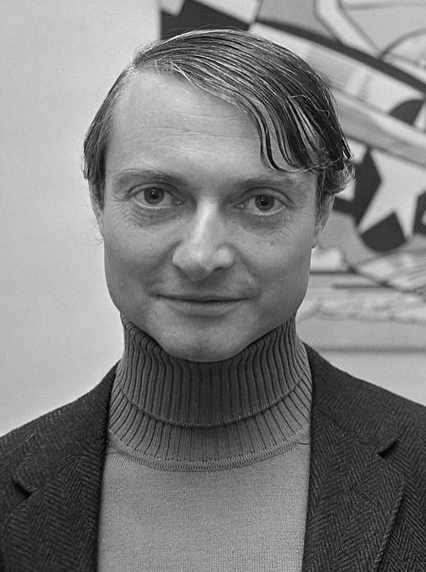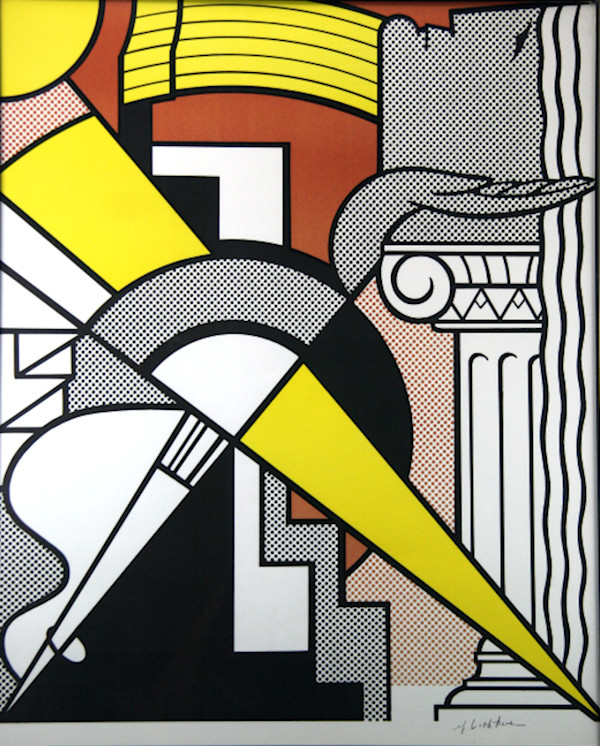
-
Artist: Roy Lichtenstein (1923-1997)
Roy Lichtenstein (1923–1997) was an American artist best known for his pioneering contributions to the Pop Art movement. His distinctive style, characterized by the use of Ben-Day dots, bold colors, and comic strip-inspired imagery, made him one of the most recognizable and influential artists of the 20th century. Lichtenstein’s work is often viewed as both a celebration and a critique of consumer culture, mass media, and art itself.
Early Life and Education:
Born: October 27, 1923, in New York City.
Lichtenstein studied at the Art Students League of New York before enrolling at Ohio State University, where he studied under Hoyt L. Sherman. His formal art education was interrupted by World War II, during which he served in the U.S. Army.
Artistic Style and Pop Art Influence:
Pop Art: Lichtenstein became a central figure in the Pop Art movement, which emerged in the 1950s and 1960s as a reaction against abstract expressionism. Pop Art embraced imagery from popular culture, including advertising, comic strips, and consumer products, challenging the boundaries between "high" and "low" art.
Comic Strip Aesthetic: Lichtenstein is best known for his large-scale paintings that mimic the look of comic strips. He adopted the mechanical techniques used in printing, such as Ben-Day dots (a technique of producing gradations of color in printing), thick outlines, and speech bubbles to create his signature style. Works like "Whaam!" (1963) and "Drowning Girl" (1963) are classic examples of this comic-strip aesthetic.
Reinterpretation of Commercial Art: Lichtenstein’s work often appropriated images from comics and advertisements, transforming them into large, meticulously painted canvases. In doing so, he recontextualized mundane imagery, forcing viewers to consider the artistic value and cultural significance of mass-produced visuals. His work was both a celebration of popular culture and a subtle critique of its superficiality.
Notable Works:
"Whaam!" (1963): This iconic painting depicts an explosive aerial combat scene, inspired by a comic book panel. It is one of Lichtenstein’s most famous works and exemplifies his ability to turn mass media imagery into high art.
"Drowning Girl" (1963): Another famous work that exemplifies his comic-strip style, "Drowning Girl" portrays a woman in distress, with bold text and Ben-Day dots. The dramatic composition plays with melodramatic themes often seen in romance comics of the era.
"Brushstroke" Series (1965–1966): In this series, Lichtenstein explored the tension between mechanical reproduction and the gestural strokes of abstract expressionism. By rendering the spontaneous brushstroke in his characteristic clean, mechanized style, he commented on the nature of art itself.
Criticism and Controversy:
Lichtenstein’s work was sometimes controversial, with critics accusing him of plagiarism due to his direct appropriation of comic book panels. However, Lichtenstein maintained that he was not simply copying but transforming these images through the process of enlarging and refining them, elevating them to the status of fine art. His use of irony and parody was key to understanding his work as both an homage and a critique of the mass media.
Later Work and Legacy:
As Lichtenstein’s career progressed, he expanded beyond comic-inspired works. He explored a range of subjects, including art historical references to the works of Picasso, Monet, and Mondrian, as well as themes related to abstraction, landscapes, and even still life.
Public Commissions: Lichtenstein created several large-scale public commissions, including murals and sculptures, that are on display in major cities around the world.
Legacy: Roy Lichtenstein’s influence on contemporary art is vast. He played a crucial role in redefining the relationship between art and mass media, and his work continues to be widely exhibited. Lichtenstein's paintings are part of major collections at institutions like the Museum of Modern Art (MoMA) in New York, the Tate Modern in London, and the National Gallery of Art in Washington, D.C.
Death:
Lichtenstein passed away on September 29, 1997, in New York City, leaving behind a body of work that continues to inspire artists and provoke discussions on the nature of art, culture, and media. His vibrant, comic-inspired pieces remain some of the most recognizable and celebrated images of the 20th century.
Lichtenstein’s work remains iconic for its boldness and intellectual engagement with popular culture, making him one of the defining figures of post-war American art.
Powered by Artwork Archive
